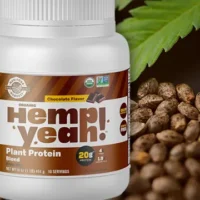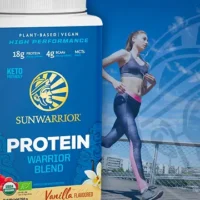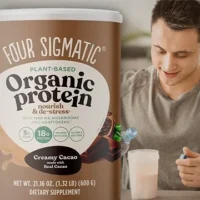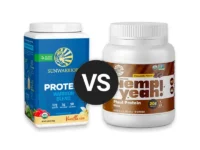Knowledge BaseYou're Questions Answered
How much omega 3 is in hemp protein powder?
Hemp protein powder is not only valued for its high protein content but also for its impressive profile of omega-3 fatty acids. Omega-3s are essential fats that the body cannot produce on its own and must obtain through diet. Hemp protein powder is a particularly good plant-based source of these beneficial fats.
Typically, hemp protein powder contains about 2 to 3 grams of omega-3 fatty acids per 30 grams (about one serving) of powder1. This omega-3 is primarily in the form of alpha-linolenic acid (ALA), which is the plant-based type of omega-3 fatty acids. While ALA does not provide the direct benefits of EPA (eicosapentaenoic acid) and DHA (docosahexaenoic acid), which are found in fish oils, it still plays a crucial role in maintaining overall health by contributing to the maintenance of normal blood cholesterol levels2.
It's important to note that the conversion rate of ALA to the more active forms of omega-3 (EPA and DHA) in the body is relatively low. Studies suggest that only about 5% to 10% of ALA is converted into EPA and less than 2% is converted into DHA in humans3. Therefore, while hemp protein powder can contribute to your omega-3 intake, it should not be relied upon as the sole source of EPA and DHA.
To make the most of hemp protein powder, it can be used in conjunction with other omega-3 rich foods or supplements that provide EPA and DHA, such as fish oil or algae supplements. Including a variety of omega-3 sources in your diet is recommended to ensure a comprehensive intake of all types of omega-3 fatty acids4.
- Callaway, J. C. (2004). Hempseed as a nutritional resource: An overview. Euphytica, 140(1-2), 65-72.
- Gerster, H. (1998). Can adults adequately convert alpha-linolenic acid (18:3n-3) to eicosapentaenoic acid (20:5n-3) and docosahexaenoic acid (22:6n-3)? International Journal for Vitamin and Nutrition Research, 68(3), 159-173.
- Burdge, G. C., & Calder, P. C. (2005). Conversion of alpha-linolenic acid to longer-chain polyunsaturated fatty acids in human adults. Reproduction Nutrition Development, 45(5), 581-597.
- Simopoulos, A. P. (2002). The importance of the ratio of omega-6/omega-3 essential fatty acids. Biomedicine & Pharmacotherapy, 56(8), 365-379.
Related Questions
Related Reviews
Protein vs Protein
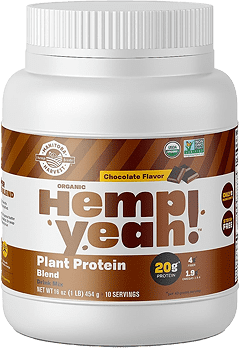
Your Answer
We are a participant in the Amazon Services LLC Associates Program, an affiliate advertising program designed to provide a means for us to earn fees by linking to Amazon.com and affiliated sites.

